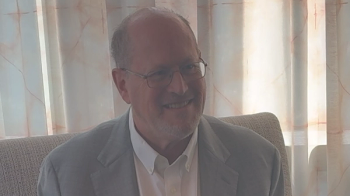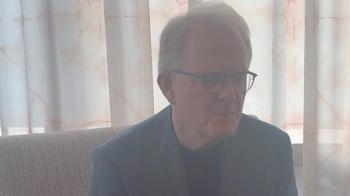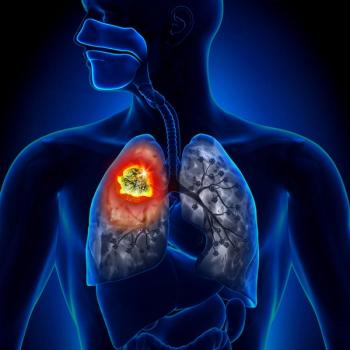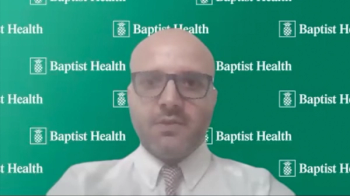
Kidney Cancer Association Initiatives Intend to Improve Education and Care
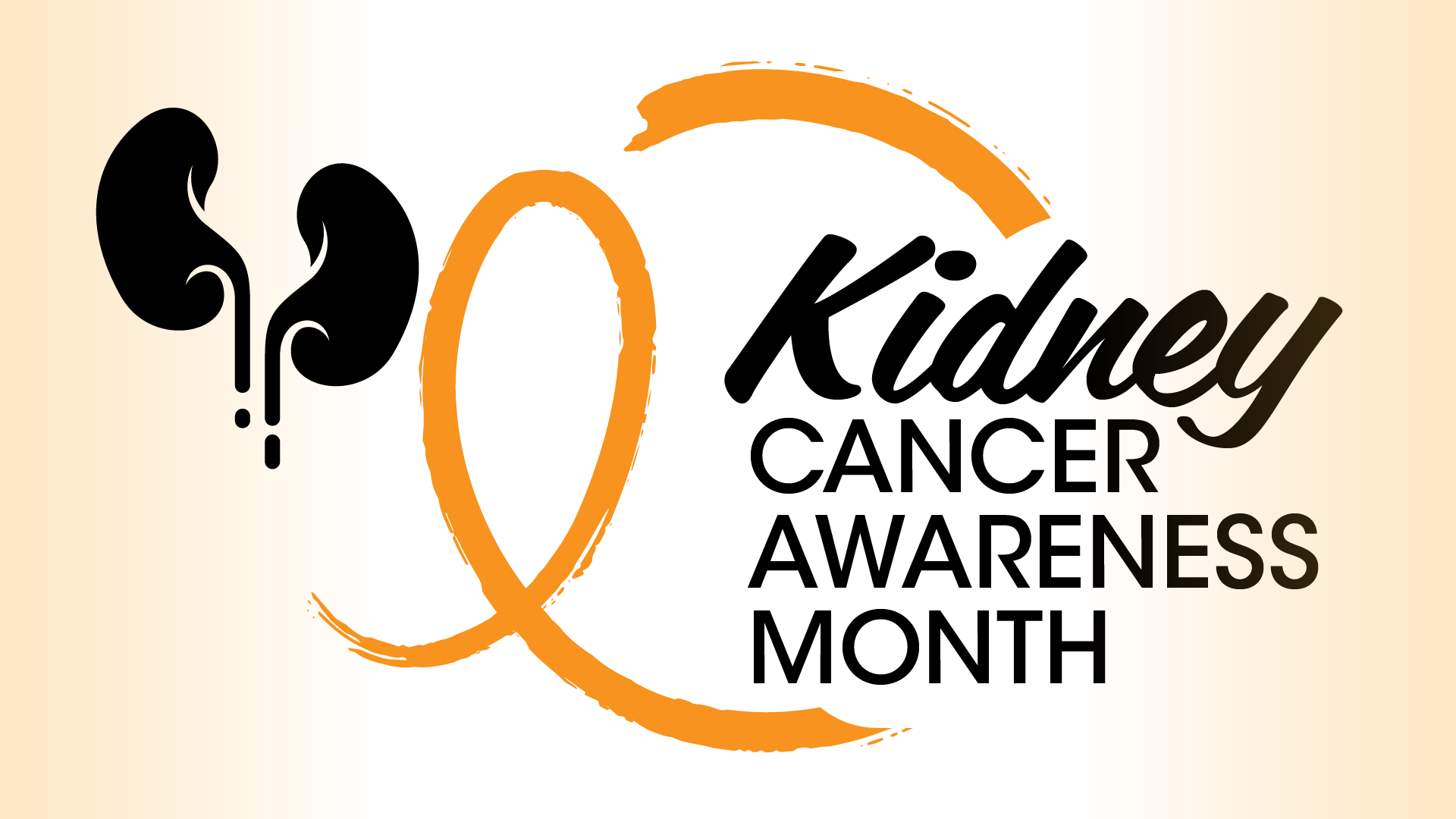
Kidney Cancer Association president Gretchen Vaughan discusses improvements being rolled out by the organization and the importance of multidisciplinary care.
Education is always a major focus for clinicians when ensuring a patient understands their disease, symptoms, and signs of toxicity. However, there is sometimes a discrepancy in the dissemination of information, and the ability to access it, according to Gretchen E. Vaughan.
In a conversation with CancerNetwork® during Kidney Cancer Awareness Month, Vaughan, president and chief executive officer of the Kidney Cancer Association (KCA) spoke regarding the needs within the kidney cancer space that need to be fulfilled, efforts from the KCA to improve resources for patients and caregivers, and the importance of a multidisciplinary team effort.
“While the KCA serves as a professional resource for our networks, [providing] networking opportunities, research, funding, and advocacy for our professionals, I just hope that health care professionals see us as an extension through these resources for their patients and caregivers,” Vaughan said. “My hope is that all of us in the oncology space begin to fully embrace the concept that we truly are unstoppable together. We all serve a critical role in this race to a cure.”
CancerNetwork®: Could you start off by speaking about what role is at the KCA and what it entails?
Vaughan: My role as the president and chief executive officer of the KCA entails a multitude of things, all of which come down to one main overarching goal: to identify ways to better serve those impacted by kidney cancer, as well as volunteers, stakeholders, health care professionals, industry partners, and donors. Anyone dedicated to championing this cause, I’m here to serve and to fill those unmet needs. The most important way in which I go about doing that and serving this kidney cancer community is by casting the broader strategic vision for the KCA based on the current as well as long-term needs of the community as a whole.
What are some areas of need within the kidney cancer space? How might these challenges be mitigated?
There are many areas of need within the kidney cancer space, unfortunately. Though we’ve seen an abundance of advances and treatment options for kidney cancer in the last 15 or so years, [our progress] still lags, in my opinion, [compared with] other disease sites. In a day and age of enormous resources and technological advances, I just find this to be unacceptable. [However, that isn't to say] that the accomplishments we’ve made are a small feat.
It was just a decade or so ago when there wasn’t much available. There has been great work done that has gotten us to today where we can now focus on how to best treat each individual patient, including treatment and treatment combinations, as well as what sequence to give them in. We weren’t able to even say those words 15 years ago. For some, it’s equated to having an option vs not at all. With that, the reality is many patients still don’t respond to treatment at all or will stop responding at a pretty quick rate, unfortunately.
For those who are responding—the 25% to 40% of patients who do respond to current therapies—the toxic adverse effects [AEs] may prohibit patients from tolerating the treatment for a long period of time or a lot of times even choosing to start them out of [concern] of what that will entail.
Lastly, one of the 3 big needs in this space is rare subtypes; they have not been addressed yet. With these rare subtypes, we have little to no options still. Many times, these subtypes are found in younger populations of people, and/or minority groups, most of whom are not well represented in the main clinical sites, which in turn poses great clinical bias within our clinical trials. There are many areas of need, but I see these 3 as the [most prominent].
Accessing clinical trials has been a notable challenge for underserved patient populations. What are some of the strategies that may help to try to remedy that?
People have been focused on this and talking about this both from a clinical perspective and an advocacy/industry perspective. We’re all still wrapping our brains around how to go about implementing such strategies. From the KCA’s perspective, we’re trying to come at this from a multitude of angles.
We try to educate everyone from the patient to the caregiver to the health care professionals and everything in between. To do that, we’ve done a good job with the National Cancer Institute (NCI)–designated cancer centers; they do a good job of disseminating information as fast and as quickly as they can identify it. At the same time, they only have the information based on their one individual siloed institution based on their patient data which, again, lends itself to the problem with which we’re talking about.
Part of that is, we are coming up with outreach programs through a Clinical Partner Network that we’re building as we speak, to where we can get more and more people who have a relationship with the KCA and use us as an extension of themselves to help educate their patients beyond the things that they’re responsible for in their own jobs. With that, we find that the biggest problem is getting the information in the right hands. It’s not always the doctor, sometimes it’s the marketing coordinator, the nurse coordinator, or a patient advocate; it's somebody different at every institution.
First, we have to do a better job of gathering that information, finding the right people at each of the locations, and institutions and getting in front of them, educating them, and disseminating information. It’s not an overnight type of thing. We do have a Medical Steering Committee and a Clinical Advisory Board that has been instrumental in helping us get to a key point with people initially, especially in setting up our program for second opinions, through the Cleveland Clinic.
We’re trying to partner with some of those individuals and institutions so that we can then find better ways to have that information trickle down to the community doctors and the community patients who will never be able to get to or be seen at one of the NCI-designated cancer centers. Another way, of course, is social media and physical content, as well; so many of our patients are older so not all of them, are social media savvy or even participate.
COVID gave us a few [silver linings], one of which were we started to see how we could do things more efficiently. Part of that is going virtual for our patients symposium; it allowed people who couldn’t ever travel before, were too sick, or who had financial issues [to travel]. We have a Virtual Patient Symposium every year now. We’re also starting to look to regional and underserved communities, and community leaders to help us populate very specific and targeted messaging in their area to their needs.
Lastly, we’re just about to roll out an affiliate program, with 3 partner groups—Chris “CJ” Johnson Foundation, the Chromophobe and Oncocytic Tumor Alliance, and Joey’s Wings Foundation—that have done a phenomenal job of awareness, especially around rare types of kidney cancer, where they have the ear of the patient population and the caregivers. They may not have a lot of infrastructure or any for that matter; a lot of them were started by patients or caregivers themselves. With that, we want to make sure that they’re able to amplify their voice and their message. We find that if we can partner with and create this affiliate relationship with them, then we can even enhance what they’re doing even more and reach more people in a way that would take us a much longer time to do that internally. That’s being rolled out this month.
Are there any other initiatives that the KCA is working on right now that you want to highlight?
In the last 4 or 5 years, we have ramped up in an extraordinary way. We have taken a much more patient-centric approach to all of our outreach and programmatic efforts. First, we started with a Medical Steering Committee and a Clinical Advisory Board, but we realized quickly that the actual patient and caregiver voice was missing from the dynamic. [Therefore], we created the Patient and Caregiver Advisory Council to ensure that we were getting real-time, consistent input from the community at large. Then we assess the overall needs of the community from an educational, research, and advocacy perspective.
To fulfill some of those educational gaps, we created in-depth content and materials to assist the patients through the entire cancer cycle, from diagnosis to treatment to AEs to survivorship, and living with cancer. We are still constantly updating and tweaking and adding information with the help of these 3 committees that watch and monitor the information closely. We added a live patient liaison with future aspirations of adding nurse navigators as well.
So many of my colleagues as health care professionals get very excited—as they should—when they have found a treatment or they have resected the cancer and they send them on their way, not realizing that, the patient is still very much at a loss, and very scared. [Anxiety around] scans is a real thing and the ongoing financial hardship [comprises] over 50% of our calls on a daily basis.
[Because of this] we created the Patient Assistance Fund that helps with some of the ancillary costs that aren’t covered by any insurance. Just to get to a reputable facility, there [are extra costs such as] parking, food-related costs, hotel stays, and gas. We’re trying to ramp up that assistance fund to help support these needs. The goal would be to build that fund up to where we could eventually even pay even for treatment that perhaps wouldn’t happen otherwise for those that are underinsured.
We’ve just recently launched a clinical trial finder. It has taken us 4 years to find one that was even remotely user-friendly for our patients and help them gather all of their medical histories, so that they can make a better decisions up front instead of further down the line. This makes it a little less scary, especially the education around clinical trials and getting it to where it seems accessible for everyone. That is the goal going forward.
We’re working on the healthcare provider search tool in conjunction with our Clinical Partner Network. That would be a resource for people to be able to search online almost like a heat map to determine who may be caring for your rare cancer specialty in your area. People have a hard time figuring out where is the best place to go and who is providing a clinical trial that would be appropriate.
We also have an AE tracker that has been super helpful and is a way to take that information, track it, and bring it to the doctor to make those conversations easier.
It's amazing to me how many times—and I’m guilty of it, too—we see our physician, and they ask us these questions. We just say, "Oh, it’s going well," or "It’s going fine,". We don’t want to take up too much of their time, if we don’t know if an AE is worth talking about. These kinds of things, including a question sheet for their physician have been incredibly helpful for patients to take with them and get these conversations started so that the physician is getting the whole picture. We started 2 different support groups: one for patients and then recently, we got a lot of feedback that caregivers, though some of them participate in the patient support group, they would like to have their own support group separate and away from the patients to ask some questions that perhaps are a little bit more private.
To address the treatment and research gaps, we’ve ramped up our granting program with a number of awards. We’ve brought it in internally so that we can make changes and tweaks to the process as the needs change. A good indication of that is we’ve created some focus awards recently, the first one was around psychosocial issues because that never seems to be addressed in a real-time manner. It has been incredibly helpful and wonderful to watch it grow and how it’s been helping the patient population.
This year, we’re going to roll out a couple of additional focus grants in conjunction with our affiliate groups that are coming on board to address rare specific types [of kidney cancer], such as chromophobe and translocation. This would be addressing very specific needs within the kidney community. Then we created a Think Tank a few years back where thought leaders internationally come together once a year in person and then subcommittees break out from there to identify much more complicated gaps of knowledge and research.
These subsets come together throughout the year to put together a plan of action. One of the big projects we’ve been working on for the last couple of years is our [KCA Data Federation] project that we’re very excited about. We’re getting closer to having our first 2 organizations signed up. It will also address some of the disparities in all these populations of patients that don’t get captured in most of these clinical trials.
It’ll certainly access a wider array of prospective and retrospective data that will allow us to accelerate the research quicker and more accurately, especially for clinical trial recruitment. It will hopefully ensure, again, a representative pool of patients across the entire care spectrum. We’re just hoping it’ll speed the process up and make things easier and more cost-effective for all physicians, whether they’re community doctors, single practice, or even industry partners to be able to run queries in a real time manner with a more comprehensive pool of data.
Could you speak to the importance of having a multidisciplinary care team for patients with kidney cancer?
The multidisciplinary approach and care team are critical in this day and age for patients with kidney cancer or any cancer in general. It is a complicated disease that is even more specific to the individual patient, depending on each person’s DNA. To be able to come at it from every angle requires everybody’s perspective to be able to attack the disease in a timely manner.
To effectively treat, in my opinion, the whole patient and give them their best possibility for survivorship requires all these specialties convening and agreeing to arrive at the right diagnosis at the right time, because catching it earlier, obviously is going to make a huge difference. Then to be able to take that information and find the right treatment plan from from the beginning.
This also includes managing AEs, pain management, psychosocial anxiety and depression, and continued education through each of the phases of the cancer cycle where each specialty will be able to weigh in on their role in treating the patient. All the way to helping to decide when to best [to to] bring in palliative is very complicated for families and the caregiver. True shared decision-making extends far beyond a person’s main doctor. It’s a team effort between the patient, the caregiver, the urologist, the surgeon, the medical oncologist, the radiologist, and the pathologist. We have taken a very intentional effort to make sure all those areas are represented both on our committees and our board going forward so that we ensure we have the full picture.
Newsletter
Stay up to date on recent advances in the multidisciplinary approach to cancer.


